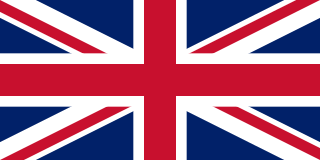 W
WThe term "British Malaya" loosely describes a set of states on the Malay Peninsula and the island of Singapore that were brought under British hegemony or control between the 18th and the 20th centuries. Unlike the term "British India", which excludes the Indian princely states, British Malaya is often used to refer to the Federated and Unfederated Malay States, which were British protectorates with their own local rulers, as well as the Straits Settlements, which were under the sovereignty and direct rule of the British Crown, after a period of control by the East India Company.
 W
WThe Battle of Penang occurred on 28 October 1914, during World War I. It was a naval action in the Strait of Malacca, in which the German cruiser SMS Emden sank two Allied warships.
 W
WBattle of Semur River was an armed encounter which took place on 25 March 1950 between the Malay Regiment and the gunmens of Malayan Communist Party during the Malayan Emergency. Seventeen soldiers of the Malay Regiment, from 12th Platoon of Delta Company were killed by the revolutionaries, and eight soldiers wounded in the battle. Twenty-nine communist revolutionaries were killed by the Malayan soldiers.
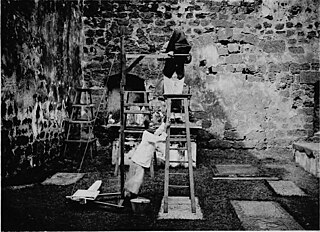 W
WRobert Norman Bland (1859–1948), or "R. N. Bland," as he was more commonly known then in The Straits, was Resident Councillor of Penang and a career civil servant in the Colonial Administration of the Straits Settlements.
 W
WBritish Borneo comprised the four northern parts of the island of Borneo, which are now the country of Brunei, two Malaysian states of Sabah and Sarawak, and the Malaysian federal territory of Labuan. During the British colonial rule before World War II, Sarawak was known as the Raj of Sarawak (1841–1946), Sabah was known as North Borneo (1881–1946), and Labuan was known as the Crown Colony of Labuan (1848–1946). Between World War II and their independence from Britain, Sarawak became the Crown Colony of Sarawak (1946–1963) whereas Sabah and Labuan combined to form the Crown Colony of North Borneo (1946–1963). The Kingdom of Brunei (1888/1906-1984) was a protectorate of the United Kingdom since the 1888/1906 Protectorate Agreement, and was known as British Protectorate State of Brunei.
 W
WThe British Military Administration (BMA) was the interim administrator of British Malaya from August 1945, the end of World War II, to the establishment of the Malayan Union in April 1946. The BMA was under the direct command of the Supreme Allied Commander South East Asia, Lord Louis Mountbatten. The administration had the dual function of maintaining basic subsistence during the period of reoccupation, and also of imposing the state structure upon which post-war imperial power would rest.
 W
WSingapore in the Straits Settlements refers to a period in the history of Singapore from 1826 to 1942, during which Singapore was part of the Straits Settlements together with Penang and Malacca. From 1830 to 1867, the Straits Settlements was a residency, or subdivision, of the Presidency of Bengal, in British India.
 W
WBukit Kepong incident was an armed encounter which took place on 23 February 1950 between the Federation of Malaya Police and the gunmen of Malayan Communist Party during the Malayan Emergency. This conflict took place in an area surrounding the Bukit Kepong police station in Bukit Kepong. The wooden station was located on the river banks of the Muar River, about 59 km from Muar town, Johor.
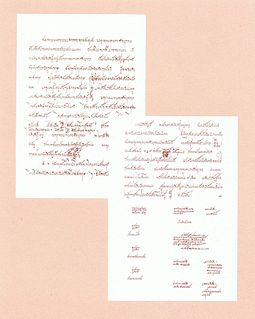 W
WThe treaty between Kingdom of Siam and Great Britain commonly known as the Burney Treaty was signed at Bangkok on 20 June 1826 by Henry Burney, an agent of British East India Company, for Britain, and King Rama III for Siam. It followed an earlier treaty of 24 February 1826, in which Siam became an ally of Britain against the Kingdom of Ava (Burma), with which Britain was at war. A Siamese army was raised and equipped, but took no serious part in the war due to ill-feeling and suspicion arising from the Siamese invasion of Kedah in 1821.
 W
WSun Yat-sen along with Tong Meng Hui were not all that successful in holding revolutionary activities in Malaya, which consists of present-day Peninsular Malaysia and Singapore. The British colonial government maintained diplomatic relations with the Qing Government from the point of view of national relations, and the Qing embassies in Singapore and Penang became obstructions for the revolutionary activities. On the other side, the diplomats of the Qing Government visited areas of Malaya, and were welcomed by the local Chinese residents. These diplomats lobbied for local Chinese loyalty to the Qing Government; some of them sold government positions to achieve these goals. Hu Hanmin described the Chinese in the Southeast Asia as "Anyone that had some sort of official positions under the Manchus can go to Southeast Asia and bluff, saying "The three generations of my family were all first-grade officials, and I'm also a significant official with luxurious government headgear!", and these bluffs will create a sensation in the local Chinese to adore you. From Hu Hanmin's description, it is apparent that the Chinese in Malaya were still influenced by conservative ideas. These conservative ideas helped the royalists led by Kang Youwei to win responses from the local Chinese residents.
 W
WThe East India Company (EIC), also known as the Honourable East India Company (HEIC), East India Trading Company (EITC), the English East India Company or the British East India Company, and informally known as John Company, Company Bahadur, or simply The Company, was an English and later British joint-stock company. It was formed to trade in the Indian Ocean region, initially with the East Indies, and later with Qing China. The company ended up seizing control of large parts of the Indian subcontinent, colonised parts of Southeast Asia and Hong Kong after the First Opium War, and maintained trading posts and colonies in the Middle Eastern Gulf called Persian Gulf Residencies.
 W
WThe Federated Malay States (FMS) was a federation of four protected states in the Malay Peninsula—Selangor, Perak, Negeri Sembilan and Pahang—established by the British government in 1896, which lasted until 1946, when they, together with two of the former Straits Settlements and the Unfederated Malay States, formed the Malayan Union. Two years later, the Union became the Federation of Malaya, which achieved independence in 1957, and finally Malaysia in 1963 with the inclusion of North Borneo, Sarawak and Singapore.
 W
WThe Federation of Malaya was a federation of what previously had been British Malaya comprising eleven states that existed from 1 February 1948 until 16 September 1963. The Federation became independent on 31 August 1957, and in 1963, Malaysia was formed when the federation united with the Singapore, North Borneo, and Sarawak Crown Colonies.
 W
WThe Force 136 was the general cover name, from March 1944, for a Far East branch of the British World War II intelligence organisation, the Special Operations Executive (SOE). Originally set up in 1941 as the India Mission with the cover name of GSI(k), it absorbed what was left of SOE's Oriental Mission in April 1942. The man in overall charge for the duration of the war was Colin Mackenzie.
 W
WThe Royal Malaysia Police trace their existence to the Malacca Sultanate in the 1400s and developed through administration by the Portuguese, the Dutch, modernization by the British beginning in the early 1800s, and the era of Malaysian independence.
 W
WIndependence Day, is the official independence day of Federation of Malaya. It commemorates the Malayan Declaration of Independence of 31 August 1957, and is defined in Article 160 of the Constitution of Malaysia. The day is marked by official and unofficial ceremonies and observances.
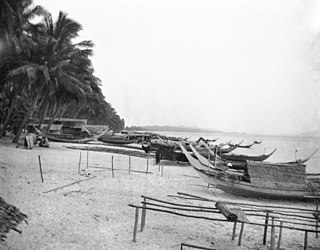 W
WThe Japanese Invasion of Malaya began just after midnight on 8 December 1941 before the attack on Pearl Harbor. It was the first major battle of the Pacific War, and was fought between ground forces of the British Indian Army and the Empire of Japan.
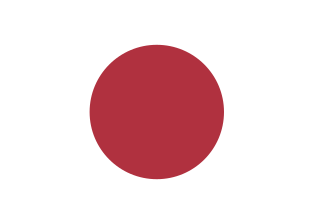 W
WMalaya was gradually occupied by the Japanese between 8 December 1941 and the Allied surrender at Singapore on 16 February 1942. The Japanese remained in occupation until their surrender to the Allies in 1945. The first Japanese garrison in Malaya to lay down their arms was in Penang on 2 September 1945 aboard HMS Nelson.
 W
WThe Kedah Sultanate is a Muslim dynasty located in the Malay Peninsula. It was originally an independent state, but became a British Protectorate in 1909. Its monarchy was abolished after it was added to the Malayan Union but was restored and added to the Malayan Union's successor, the Federation of Malaya.
 W
WThis is the list of people who have held the highest political office in Penang and its previous entities. Penang is a state in Malaysia.
 W
WMalacca was a British Crown colony from 1946 to 1957. It came under British sovereignty after the signing of the Anglo-Dutch Treaty of 1824, and had been part of the Straits Settlements until 1946.
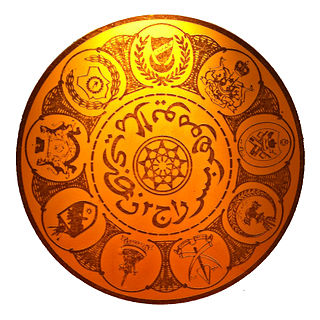 W
WThe monarchies of Malaysia refer to the constitutional monarchy system as practised in Malaysia. The political system of Malaysia is based on the Westminster parliamentary system in combination with features of a federation.
 W
WThe Malaya and British Borneo dollar was the currency of Malaya, Singapore, Sarawak, North Borneo, Brunei and Riau archipelago from 1953 to 1967 and was the successor of the Malayan dollar and Sarawak dollar, replacing them at par. The currency was issued by the Board of Commissioners of Currency, Malaya and British Borneo. Prior to 1952, the board was known as the Board of Commissioners of Currency, Malaya.
 W
WThe Malayan campaign was a military campaign fought by Allied and Axis forces in Malaya, from 8 December 1941 – 31 January 1942 during the Second World War. It was dominated by land battles between British Commonwealth army units, and the Imperial Japanese Army with minor skirmishes at the beginning of the campaign between British Commonwealth and Royal Thai Armed Forces. The Japanese had air and naval supremacy from the opening days of the campaign. For the British, Indian, Australian and Malayan forces defending the colony, the campaign was a total disaster.
 W
WThe Malaya Command was a formation of the British Army formed in the 1920s for the coordination of the defences of British Malaya, which comprised the Straits Settlements, the Federated Malay States and the Unfederated Malay States. It consisted mainly of small garrison forces in Kuala Lumpur, Penang, Taiping, Seremban and Singapore.
 W
WThe Malayan Communist Party (MCP), officially known as the Communist Party of Malaya (CPM), was a political party in the Federation of Malaya and Malaysia. It was founded in 1930 and laid down its arms in 1989. It is most known for its role in the Malayan Emergency.
 W
WThe Malayan People's Anti-Japanese Army was a paramilitary group that was active during the Japanese occupation of Malaya from 1942 to 1945. Composed mainly of ethnic Chinese guerrilla fighters, the MPAJA was the biggest anti-Japanese resistance group in Malaya. Founded on 18 December 1941 during the Japanese invasion of Malaya, the MPAJA was conceived as a part of a combined effort by the Malayan Communist Party (MCP), British colonial government, and various anti-Japanese groups to resist the Japanese occupation of Malayan territory. Although the MPAJA and the MCP were officially different organisations, many saw the MPAJA as a de facto armed wing of the MCP due to its leadership being staffed by mostly ethnic Chinese communists. Many of the ex-guerrillas of the MPAJA would later join the MCP in its open conflict with the BMA during the Malayan Emergency.
 W
WThe Malayan Union was a union of the Malay states and the Straits Settlements of Penang and Malacca. It was the successor to British Malaya and was conceived to unify the Malay Peninsula under a single government to simplify administration. Following opposition by the ethnic Malays, the union was reorganised as the Federation of Malaya in 1948.
 W
WThe Pangkor Treaty of 1874 was a treaty signed between Great Britain and the Sultan of Perak on 20 January 1874, on HMS Pluto, off the coast of Perak. The treaty is significant in the history of the Malay states as it legitimised British control of the Malay rulers and paved the way for British imperialism in Malaya. It was the result of a multi-day conference organised by Andrew Clarke, the Governor of the Straits Settlements, to solve two problems: the Larut War, and Sultanship in Perak.
 W
WThe Penang Chinese Chamber of Commerce, established in June 1903, was the first Chinese Chamber of Commerce in Malaya.
 W
WPenang was a British Crown colony from 1946 to 1957. It came under British sovereignty after being ceded by the Sultanate of Kedah in 1786, and had been part of the Straits Settlements in 1946. Together with Singapore, it became a Crown colony under the direct control of the British Colonial Office in London until it was incorporated into the Malayan Union.
 W
WSeberang Perai is a city in the Malaysian state of Penang. It is situated on the Malay Peninsula opposite Penang Island, bordering Kedah to the north and east and Perak to the south. Its city centre is located in Butterworth, while its local authority, the Seberang Perai City Council, is centred near Bukit Mertajam. As of 2010, Seberang Perai had a population of 815,767, making it the second most populous city in Malaysia.
 W
WThe Royal Malay Regiment is the premier unit of the Malaysian Army's two infantry regiments. At its largest, the Malay Regiment comprised 27 battalions. At present, three battalions are parachute trained and form part of the Malaysian Army Rapid Deployment Force. Another battalion has been converted into a mechanised infantry battalion while the remaining battalions are standard light infantry. The 1st Battalion Royal Malay Regiment acts as the ceremonial foot guards battalion for the Yang di-Pertuan Agong, and is usually accompanied by the Central Band of the Royal Malay Regiment. As its name suggests, the regiment only recruits ethnic Malays.
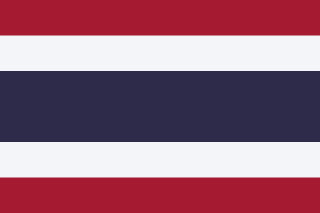 W
WSi Rat Malai is a former administrative division of Thailand. It included the four northern states of Kedah, Perlis, Kelantan, and Terengganu in British Malaya annexed by the Axis-aligned Thai government after the Japanese invasion of Malaya.
 W
WSingapore in the Straits Settlements refers to a period in the history of Singapore from 1826 to 1942, during which Singapore was part of the Straits Settlements together with Penang and Malacca. From 1830 to 1867, the Straits Settlements was a residency, or subdivision, of the Presidency of Bengal, in British India.
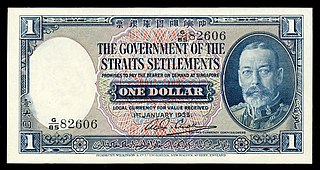 W
WThe Straits dollar was the currency of the Straits Settlements from 1898 until 1939. At the same time, it was also used in the Federated Malay States, the Unfederated Malay States, Kingdom of Sarawak, Brunei, and British North Borneo.
 W
WThe Straits Settlements were a group of British territories located in Southeast and East Asia. Originally established in 1826 as part of the territories controlled by the British East India Company, the Straits Settlements came under direct British control as a Crown colony on 1 April 1867. In 1946, following the end of the Second World War and the Japanese occupation, the colony was dissolved as part of the Britain's reorganisation of its dependencies in the area.
 W
WThe term Unfederated Malay States was the collective name given to five British protected states in the Malay peninsula in the first half of the twentieth century. These states were Johor, Kedah, Kelantan, Perlis, and Terengganu. In contrast with the four adjoining Federated Malay States of Selangor, Perak, Pahang, and Negri Sembilan, the five Unfederated Malay States lacked common institutions, and did not form a single state in international law; they were in fact standalone British protectorates.
 W
WWife selling is the practice of a husband selling his wife and may include the sale of a female by a party outside a marriage. Wife selling has had numerous purposes throughout the practice's history; and the term "wife sale" is not defined in all sources relating to the topic.